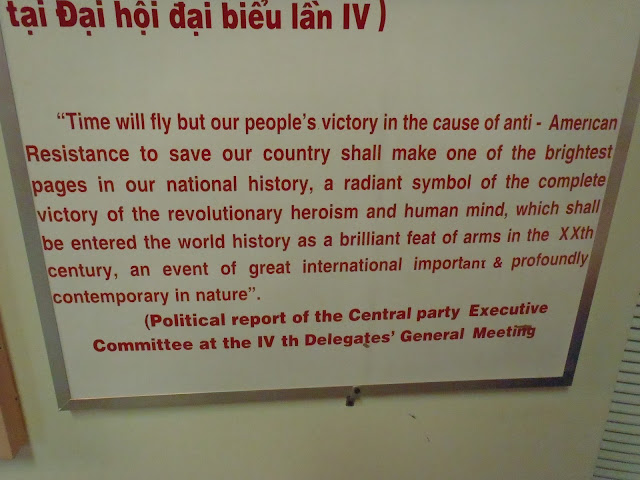 |
| Ho Chi Minh, the father of the revolution. His aim was to overthrow the colonialists. After the war the name of the city Saigon was changed to his name. |
 |
| The city hall. |
 |
| Notre Dame Cathedral. Much French influence from the colonial days. The French were defeated in 1954. |
 |
| The old Post Office, done in French architecture. |
 |
| Inside the station. |
 |
| The Imperial Palace, built in the 60's(when the other one was bombed). This is where the President lived until he surrendered 0n April 30, 1975. |
 |
| Inside the palace in a meeting room. |
 |
| The next few pictures are from inside the Palace. You can note the 70's style. |
 |
| The windows were designed to prevent direct sunlight, and thus keep it cooler. |
 |
| These are the palace gates through which North Vietnamese tanks crashed to bring the war to an end. |
 |
| The actual Russian tanks are sitting off to the left of the gate. |
 |
| More meeting and dining rooms in the palace. |
 |
| A radio room in the basement bomb shelter. |
 |
| Jeep which took the President to a radio station to surrender. |
 |
| Everything was very anti-American, and the communists take great delight in gloating over their victory. |
 |
| A picture in the basement of the Palace showing the tanks crashing through the gates. |
 |
| Tanks doing "wheelies" on the grass. |
 |
| People escaping by helicopter as the communists were taking the city of Saigon. |
 |
| We next moved over to the War Museum. There were displays of American equipment in the outer yard. |
 |
| Chinook helicopter. |
 |
| "Bird dog plane" |
 |
| Forget the name of this one. |
 |
| President Clinton restored relationships with Vietnam in 1995 |
 |
| War weapons inside the museum. |
 |
| There are a number of pictures inside the museum. |
 |
| One of the most famous pictures taken during the war. |





No comments:
Post a Comment